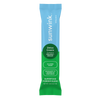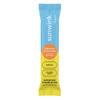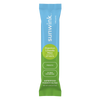A Plant-Based Diet for Beginners: Going Vegan 101

People all around the world are starting to try plant-based eating. Not only can it help support weight management and overall wellness, but it may also benefit animals, the environment, and those who work on animal farms. Plus, all those plant-based recipes look seriously delicious.
If you’re new to veganism, you might not know exactly where to start. To make the transition process easier, this guide from Sunwink explains what a plant-based meal plan or diet is, the health benefits and reasons to adopt it, and ways to make it easier as a first-timer.
Read on for everything you need to know about ditching your old eating habits and going plant-based!
What Is a Vegan Diet?
A vegan diet, quite plainly, excludes all foods derived from animals. This, of course, includes meat, fish, and poultry. However, dairy products, eggs, and even honey are commonly also excluded.
So, what’s left to eat? Basically, anything in the plant world is fair game for your grocery list. This includes nuts, seeds, berries, fruits and veggies, legumes, and grains. While we don’t recommend consuming too much of them, sugars and flours are also included in the vegan diet.
There are many types of vegan diets.
For instance, raw vegans eat only uncooked food — as they believe that high temperatures can destroy nutrients in some foods. Some vegans may follow the paleo way of eating, avoiding foods that weren’t available before modern agriculture, like most grains. Others trade in processed foods for whole foods.
Other vegan diets include fruitarian and gluten-free.
With the different options available for veganism, you can fully customize it to your unique needs and preferences. As long as you avoid animal products, anything goes!
How Can I Start a Vegan Diet?
If you’re sold on the benefits of following a vegan lifestyle, then let’s jump right in.
Here’s how to start eating plant-based:
1. Know What It Entails
Let’s understand what following a vegan diet means.
Unlike those who follow a vegetarian diet — who eat eggs, dairy, and a few other animal-derived products — vegans avoid everything that comes from animals.
Here’s a list of foods to avoid as a vegan:
- Meat
- Eggs
- Cheese
- Milk
- Butter
- Heavy cream
- Yogurt
- Mayonnaise
- Honey
- Gelatin
You may also take things further and avoid wearing animal-derived materials like wool and leather.
2. Stock Up on Essentials
To succeed as a vegan, it’s important to have plenty of satisfying food options. Since you’re getting rid of animal products, you want to ensure that you have plenty of plant-based foods as replacements.
After you rid your kitchen of all animal products, hit the grocery store with the following shopping list:
-
Dairy substitutes: Go for canned coconut milk, almond milk, oat milk, cashew milk, or macadamia nut milk. You can make your own with a bag of nuts and a high-speed blender.
-
Grains: As a vegan, whole grains will become one of your biggest food groups — and an essential source of vitamins, minerals, and protein. The most accessible options are quinoa, brown rice, barley, buckwheat, and oats.
-
Legumes: These are high-protein ingredients that can replace animal protein. Go for variety with options like chickpeas, lentils, and beans (of all colors).
-
Nuts & Seeds: For a good source of healthy fats, stock up on pumpkin seeds, chia seeds, sunflower seeds, and all kinds of nuts (like macadamia, almonds, pistachios, and almonds). And don’t forget the nut butters!
-
Plant-based protein powder: For extra protein, a plant-based supplement can be helpful.
-
Healthyfats: Another effect of going plant-based is that it’s lower in fat. However, healthy fats are still important for your overall wellness, so you’ll need to find other ways to incorporate healthy fats into your diet. Make sure to stock up on coconut oil, coconut butter, cocoa butter, olive oil, and yummy seed oils like avocado oil.
-
Atonofproduce: This will form the majority of your meals. Go for all colors of the rainbow for optimal nutrition.
-
Vegansubstitutes: Be careful here, as some vegan subs can be full of fake ingredients. However, some healthy options include nutritional yeast (which tastes like cheese), organic tofu instead of meat, seitan, tempeh, coconut yogurt, and jackfruit.
3. Make Sure To Get Enough Protein
Protein is necessary for balancing hormones, building muscle, and repairing body tissues — among many other functions. Vegan diets are naturally low in protein, so make sure to pay extra attention to this essential nutrient.
If it’s possible, try to add protein to every meal.
Here’s what this can look like during a day of eating:
- Breakfast: Make an “egg” scramble with soft tofu and vegetables high in protein, such as broccoli. Add nutritional yeast for a protein boost.
- Lunch: Mash up cooked chickpeas with a plant-based mayo (or flavored hummus) as a high-protein substitute for tuna salad.
- Snack: Drink a plant-based protein shake with a Superfood powder for added benefits.
- Dinner: Make a red lentil curry with creamy coconut milk and plenty of spices.
- Dessert: Have some dark chocolate with almonds, which are higher in protein than other nuts.
4. Address Nutritional Deficiencies
Since animal proteins are huge sources of vitamin B12 and omega-3 fatty acids, you’ll want to be extra careful to make sure you supplement these vitamins properly.
Vitamin B12 is super important for neurotransmission. Without it, you may feel weak and tired. Extreme vitamin B12 deficiencies are even associated with brain damage.
So, take this vitamin super seriously and make sure to supplement regularly. If you choose to go vegan, make sure to see your doc to ensure your blood serum levels of this vitamin are where they should be.
Omega-3 fatty acids are mainly found in fish. These (literally) essential fatty acids keep your brain working as it should while maintaining skin health. Since fish oil does not comply with a vegan diet, consider taking an algae-based omega-3 supplement.
5. Chat With a Nutritionist
Even if it seems super easy, a vegan diet is a complex transition for former meat eaters. So, some extra support can’t hurt.
Consider chatting with a vegan dietician to ensure you’re on the right track and get valuable insights from someone with (hopefully) tons of experience.
What Are Some Ideas for Plant-Based Meals?
When planning your meals, keep in mind that you’ll need to prioritize dietary protein, vitamin B12, and omega-3 fatty acids. Here are some recipes that follow a vegan lifestyle without sacrificing flavor.
Kale and Radish Salad
This salad is a delicious meal to incorporate into either your lunch or dinner time routine. Simply mix up some curly kale, chopped radish, avocado, and a bit of quinoa into a bowl. Throw together your favorite store-bought or homemade plant-based pesto sauce, and dig in!
This recipe is wonderful because kale is high in both iron and vitamin B6, which many people get from animal protein. The addition of avocado and an oil-based pesto also helps to make sure you get plenty of omega-3s and omega-6s.
Bean and Veggie Stir Fry
This dish is perfect as a breakfast option or as a snack. To make this easy protein boost, simply heat up some canned black beans (or if you’re really committed, soak and cook dry beans). As the beans are heating, throw in some olive oil and onion and green pepper slices and sautee on medium-low heat.
Add garlic, salt, pepper, and onion powder to taste. If you’re craving something a little more filling, you can easily add some rice and vegan soy sauce to turn this dish into vegan fried rice. Saute until the onions are caramelized, and enjoy!
Roasted Cabbage
This easy-to-make recipe is a great side dish for a larger meal and can even be enjoyed on its own as a delicious snack. All you have to do is cut a thick slice of green cabbage and aim for a thickness of 1 inch.
Thoroughly coat both sides of the cabbage slice in olive oil and season to taste. We enjoy using onion powder, garlic powder, oregano, salt, pepper, and a pinch of cayenne pepper. You can also add some nutritional yeast for a cheesy flavor.
Simply place in the oven at 375 and bake until the top begins to get golden and crispy. You can cut your cabbage into sections or enjoy it as a giant spiral.
What Are the Benefits of a Plant-Based Diet?
Considering adopting a plant-based lifestyle?
Here are five reasons why you should make the change:
1. It’s Better for the Environment
Animal agriculture, and especially non-organic industrial meat farms, can have a terrible impact on the planet.
There are countless ways animal farming has a negative environmental impact, which include some of the following:
- Airpollution: In factory farms, animal waste is collected and broken up with toxic chemicals. These are then released into the atmosphere, polluting the surrounding atmosphere. According to the EPA, almost ¾ of ammonia pollution comes from factory farms — which is one of many greenhouse gas emissions that come from these farms. Poor air quality in surrounding communities can lead to serious health problems, ranging from asthma to dementia.
- Waterpollution: Animal waste can leak into streams, rivers, and oceans, leading to water pollution.
- Deforestation: Trees are an important part of the world’s ecosystem. However, thousands of acres of trees are cut down every year to make space for farms — whether they’re for raising animals or growing crops to feed them.
- Waterwaste: Farm animals require a significant amount of freshwater, which is already in short supply. An estimated ⅓ of the world’s water consumption goes towards raising animals.
These are just some of the environmental impacts of animal farming. The move to a plant-based lifestyle is definitely an eco-friendly move.
2. It May Be Better for Your Wellness
When you consume farm-raised meat, seafood, eggs, and dairy, you may also be consuming antibiotics, synthetic hormones, heavy metals, and other harmful substances that can accumulate in your body.
While organic and grass-fed meats do exist, it’s hard to find animal protein that is raised sustainably and free of chemicals. By going plant-based, you may be supporting your overall health and wellness.
3. It’s Easier on Your Wallet
Animal products are some of the most expensive foods you can buy. On the other hand, meatless protein sources like black beans are incredibly cheap and conducive to a healthy diet. And other plant foods, like leafy greens and sweet potatoes, aren’t all that expensive compared to meat, eggs, and dairy.
So, by cutting out meat, you’re not only doing your overall health a favor but your wallet, too!
Takeaways
By going vegan, you can support a better world that doesn’t mistreat animals, farm workers, and mother nature. And your health will thank you, too.
If you’re going vegan, this beginner’s guide from Sunwink should give you everything you need to get started.
Oh, and one last thing: Make sure to increase your nutrient intake while transitioning to this new lifestyle.
With our Superfood powders and sparkling Superfood tonics, you’ll easily get the vitamins, minerals, and antioxidants you need to make going vegan as nutritious as can be.
Our sources:
Ammonia Emission Factors From Swine Finishing Operations | EPA






